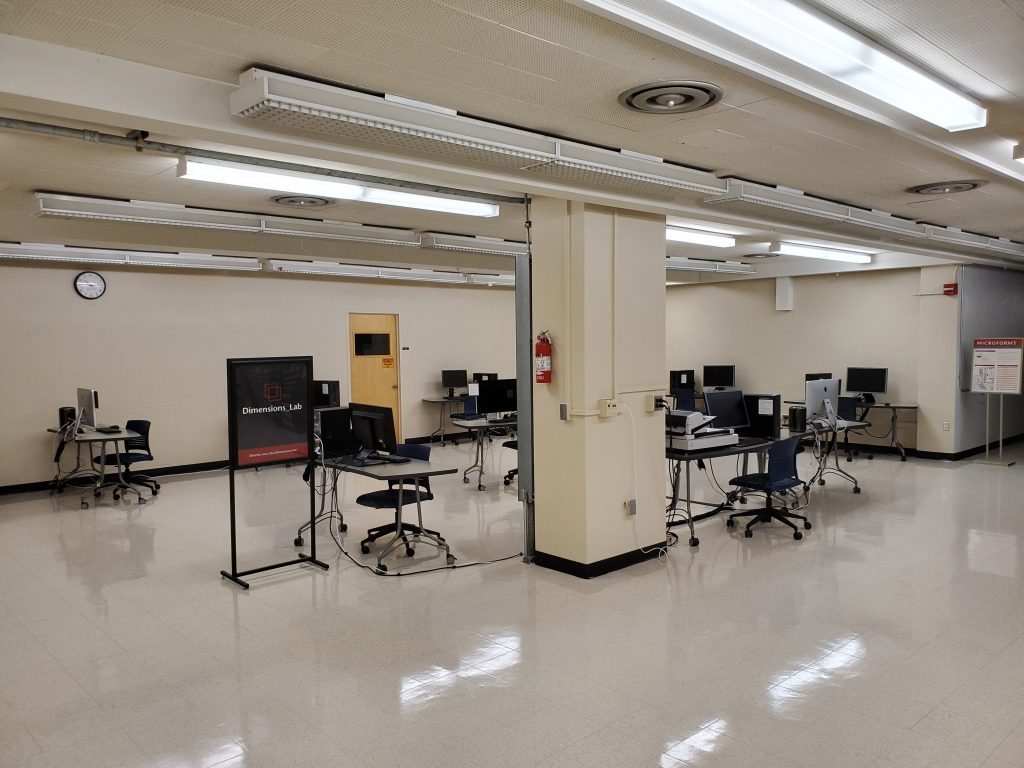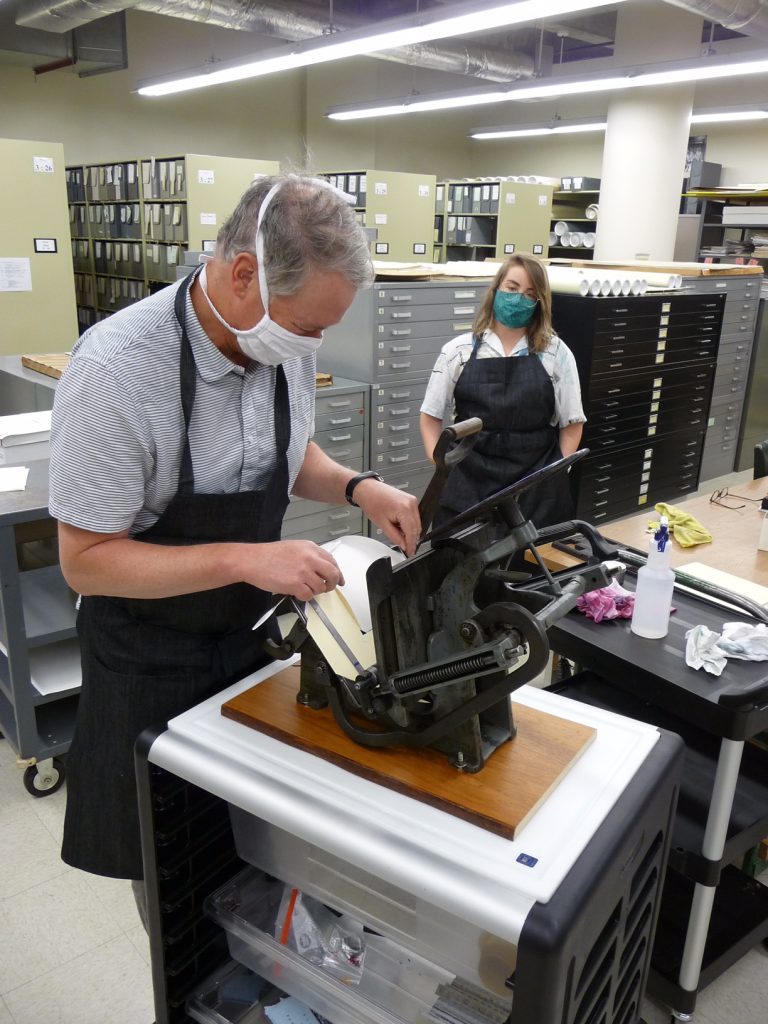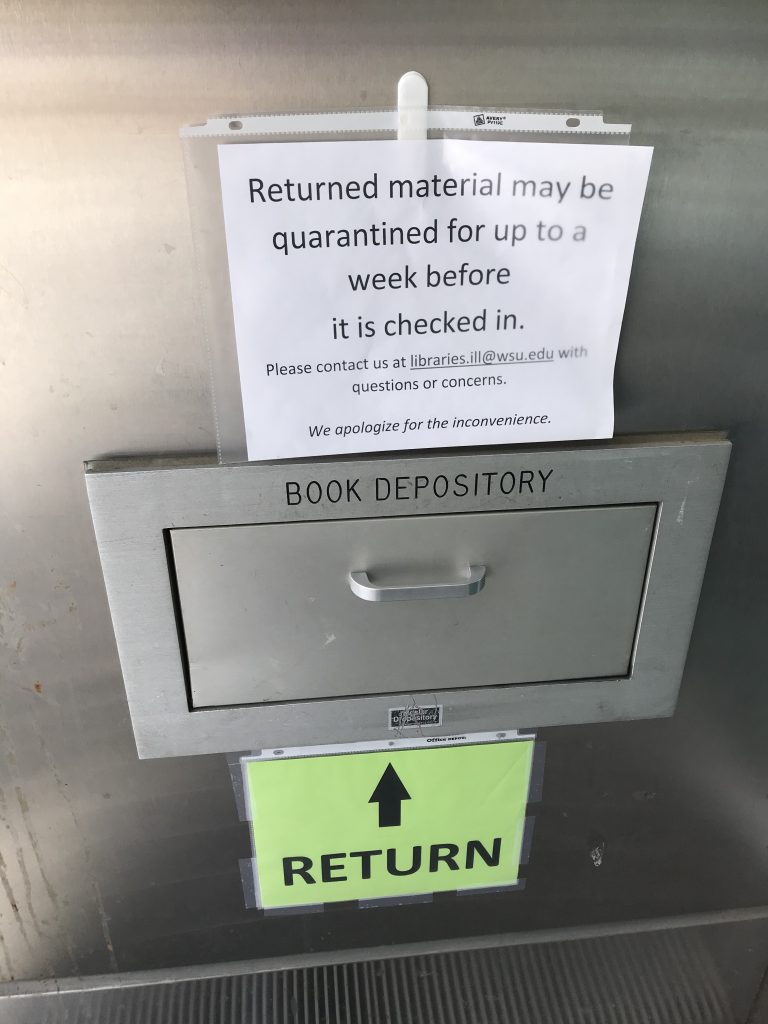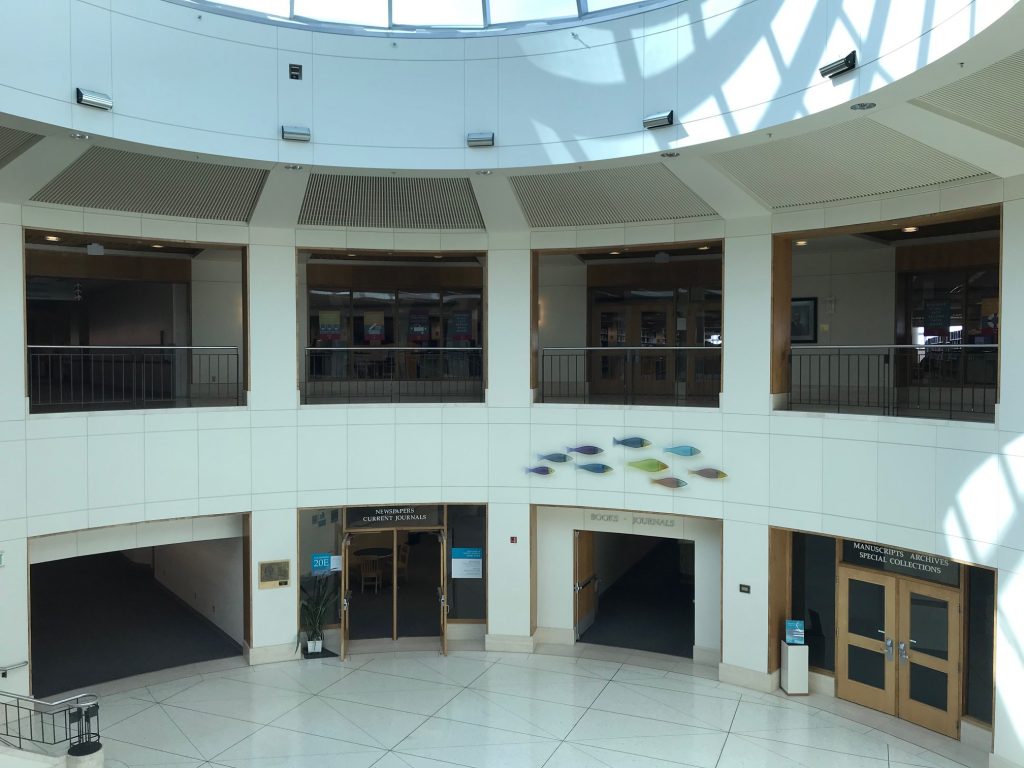Libraries Continue to Serve During COVID-19 Pullman Campus Closure
Gone are the students walking through Holland and Terrell Libraries, mixed conversations and footsteps and the tantalizing smell of fries trailing in their wake. Also gone are the in-person exchanges between librarians and students searching for research help and answers, or the pleasant reverie that comes with handling an old text in Manuscripts, Archives and Special Collections. Closed physically since March 21 out of concern for COVID-19, WSU Libraries, like libraries around the country, have changed their brick-and-mortar interactions with patrons to a largely digital-only realm, transforming services and operations.

Humanities librarian Erin Hvizdak doesn’t see the increased reliance on digital resources changing any time soon, which has necessitated a change in the role of academic libraries during the pandemic’s duration and beyond. An American Library Association survey in May and a June Inside Higher Ed opinion piece echo Hvizdak’s observations.
“We will have to re-examine our workflows, digital resource quality, costs and more,” she said. “We’re already in the midst of this and have been ramping this up for years, but if classes continue to be largely online for the foreseeable future, if researchers aren’t traveling as much or if people just start to expect or want that more, I think that all libraries and archives will have to think more creatively about the delivery of resources.”
Virtual reference on the rise
Email and other virtual communications filled the void left when librarians and patrons could no longer meet physically. Access services manager Sue Shipman and Marsha Yim, library and archives paraprofessional, have answered the bulk of email queries.
“Sue Shipman and Marsha Yim are fielding three times as many questions as they did in the past,” Hvizdak said. “In the weeks prior to the library closure, Sue and Marsha were averaging about 10 questions a week; now they are averaging more than 30 a week.”
WSU librarians have answered nearly three times as many email questions than at the same time last year, Hvizdak added. Librarians also responded to twice as many LibAnswers questions as last year. The questions tended to be more involved: walking patrons through databases, finding and obtaining resources for their research, and more. In addition, there was an increase in questions regarding online access to resources.

“This obviously isn’t surprising, but it demonstrates that patrons are increasingly going to be asking these types of questions, and the libraries are also shifting in this direction,” she said. “The libraries’ main mission is access to resources to support research and teaching, and as these are increasingly done from a distance, we are shifting our mindset to make sure that more things are immediately accessible online.”
Hvizdak noted a slight increase in WSU patron questions over 24/7 chat, but librarians are answering a higher number of questions from other schools (part of a reciprocal service through “Ask-WA,” run by the Washington State Library), demonstrating that “all libraries are increasingly collaborating to provide services to their patrons, no matter where they come from.”
Hvizdak has also spoken to faculty recently about how to increase student access to electronic materials for research this summer and into fall as WSU prepares for possible new types of course delivery and a likely increase in online delivery.
“I expect these requests to continue,” she said.
Video tutorials, research guides and instruction trends
Patrons sought information through other forms of library media during the latter part of spring semester. From March 1-May 8, WSU Libraries recorded 463 views of video tutorials, embedded in library research guides and the “How Do I…?” webpages. “How Do I…?” tutorials were visited 2,714 times during the same time period. The libraries continue to see consistent use of their other online research tools, such as LibGuides, which curate disciplinary resources for easy access.
“The majority of our top videos was course-related (Roots of Contemporary Issues specifically) and showed users how to use Chicago Manual of Style formatting in Word, search specific databases like JSTOR and Proquest Newsstream, and find primary sources in Search It,” said Jen Saulnier, online learning librarian. “The other top videos during this time period had to do with remote access: using the proxy bookmarklet, checking due dates and renewing items, and requesting full-text articles.
“Our tutorials are being used consistently, and we’ve been seeing a lot of the ones that cover off-campus access being used most frequently,” she said.
Library tutorials can be linked to in course spaces. If faculty/staff want course-specific tutorials or see a need to cover a certain topic, they can request a library tutorial be made.

Although most library instruction was completed before the libraries’ closure, first-year experience librarian Erica England still delivered more than 30 sessions, about one quarter of what was remaining from overall spring instruction numbers for English composition. Instruction and assessment librarian Corey Johnson recorded eight sessions for Roots of Contemporary Issues courses.
“Just like everything else—collections, materials, reference delivery, etc.—library instruction had to quickly adapt to the world changing so dramatically in such a short time,” England said, “and even though it was in a much different format than ‘normal’ library instruction, students and instructors both still found it beneficial. Students received the foundational research skills necessary to complete assignments and have a successful semester.
“Most importantly, we are still here for students, we still want to help them and they’re not alone when it comes to research,” she added. “We are going to do everything possible to help them become successful researchers.”
“It is great that we can continue to do a lot of public services functions online during this COVID-19 period,” Johnson said. “It is my hope that we get back fully to pre-COVID-19 operations by summer 2021.”
Going the extra mile
According to university archivist Mark O’English, MASC staff helped several classes and responded to requests remotely even as use of the physical archives by patrons came to a halt. Instead, users relied more on MASC’s digital collections. O’English, manuscripts librarian Gayle O’Hara and Trevor Bond, associate dean for digital initiatives and special collections, found themselves delving into the archives and scanning requested resources for absent scholars, something the researchers would normally do themselves.
“We are going the extra mile and doing more research for others,” O’English said. “I would not be surprised to find I was spending nearly as much time as I normally do for reference, albeit for what feels like fewer questions.”
O’English is more interested in the DIY spirit of users of MASC’s digital collections for various projects: reporter Maggie Quinlan researched recordings for a Spokesman-Review article about Washington State College student soldiers dying during the 1918 Spanish flu pandemic; a Spokane sports broadcaster explored MASC collections for historical WSU sports stories; and an individual looking for Grand Coulee Dam information happily discovered the collection of Clifford R. Koester, an engineer on the dam’s construction in the 1930s and 1940s.

“The patron had seen the Banks digital collection, but he was unaware of Koester and was really excited to have that digital collection to work through,” O’English said.
For her part, O’Hara has noticed an uptick in requests from international researchers in Germany, France and British Columbia. For another researcher of a Kenyan runners’ project who was unable to visit MASC, O’Hara reviewed materials from the WSU Athletics Department records and the WSU News Subject files, went over them with him on the phone and then made the scans herself.
“I think with everyone on lockdown, there is more time to look into things that were maybe on the backburner for them,” she said. “I do have a couple of folks that have expressed interest in coming to look at materials once we are open to the public. They go into my ‘COVID follow-up’ email folder, and I will touch base with them again once we are open and have clarity about visiting MASC.”
And finally, a last MASC reference oddity during the library closure involved animal skins mailed to MASC. O’English learned that they are called “Victory Skins,” where the fraternities of one school would bet the opposing school for the skins before a big game.
“The fraternity members that I got in touch with had literally been trying to figure out what happened to all of theirs, and lamenting that none of them remained,” he said. “They are very excited to hear about these; I gave their two back to them, and they’re going to end up framed and on the fraternity wall. I love finally having an answer as to what these are and the enthusiasm from these alums.”
What’s the new normal for WSU Libraries?
By and large, the answer to that question is uncertain, at least until more information and support is available.
“I think Access Services’ ideas of a new normal will vary greatly over the summer as we learn what our colleagues in other institutions are doing to keep their patrons and staff safe and how they will respond to requests for information,” Shipman said.

She suggests several possible changes. The libraries may see an upswing in their document delivery service, such as requests by WSU patrons for scans of chapters and articles from WSU-owned physical collections, as people may want to limit the amount of time they spend in public. That could also translate to fewer patrons onsite in general, as well as more requests from Global students if more people opt to use online learning instead of being on campus.
Some institutions are looking at using their booking systems to reserve seating and computers, since these will be scarcer with social-distancing restrictions, Shipman said.
“We are looking at how to limit our proximity to patrons as we check out material to them,” she added. “We most likely will have them swipe their own cards, for instance, and we are looking at self-checkout machines for some material.”
Other institutions are having to reconfigure how they get physical course reserves into their students’ hands, Shipman noted. But that leads to more questions, like how to quarantine and sanitize two-hour loans. In addition, sanitization protocols will need to be developed and put in place for public computers and surfaces.
Libraries associate dean Beth Blakesley said until the university makes final decisions and provides signage, supplies and protocols, it is impossible to know what’s in store for WSU Libraries. The university is taking a centralized approach so that all buildings are outfitted and signed consistently.
“[Facilities Services employees] are doing a campus walkthrough because there are many differences in buildings,” she said. “But the consistent approach is the plan, and I think it’s a good one. The signage in the libraries will be the same signage in Lighty, the CUB, classrooms, everywhere. It’s probably a good technique for getting the message across.”

Saulnier said she believes it will be important to continue to be vocal about the work library employees are doing to provide help and access to patrons if they can’t come into the libraries.
“Even as things slowly open back up, there are going to be a lot of people who may not feel comfortable coming in, so continuing to make sure that people know we offer research help through chat or have tutorials that can help them use the library will be crucial,” she said.
In MASC, Bond said more flexibility will be needed to meet scholars’ requests. For example, staff members are digitizing more collections on demand to facilitate research and using technology to evaluate archival collections with researchers, such as looking through boxes during Zoom calls. When MASC eventually opens again, limits will be placed on the number of researchers in the reading room to maintain a safe environment. Next year may even see MASC instruction given in new ways, such as small group activities in the Terrell Atrium or in other larger and more open spaces.
“Long term, I think that we will continue to work together in person for the activities where that is essential, but for meetings and other activities where it’s not, we will use technology,” he said. “As an institution, I think that all of us in the libraries care about community and making our patrons feel welcome, so we will continue to value that and look for ways to accommodate it.”
Perhaps the greatest challenge for campus libraries during the pandemic closure is restoring the lost sense of community from pre-COVID-19 days.
“This is especially true for public libraries, but it helps people to meet in person, to feel like they have a relationship with a librarian, to feel like they are being heard,” Hvizdak said. “This is hard sometimes over email or chat. You can better gauge and work around something like library anxiety in person. How do you re-create that same sense of connection when you can’t meet in person?”
—Story by Nella Letizia